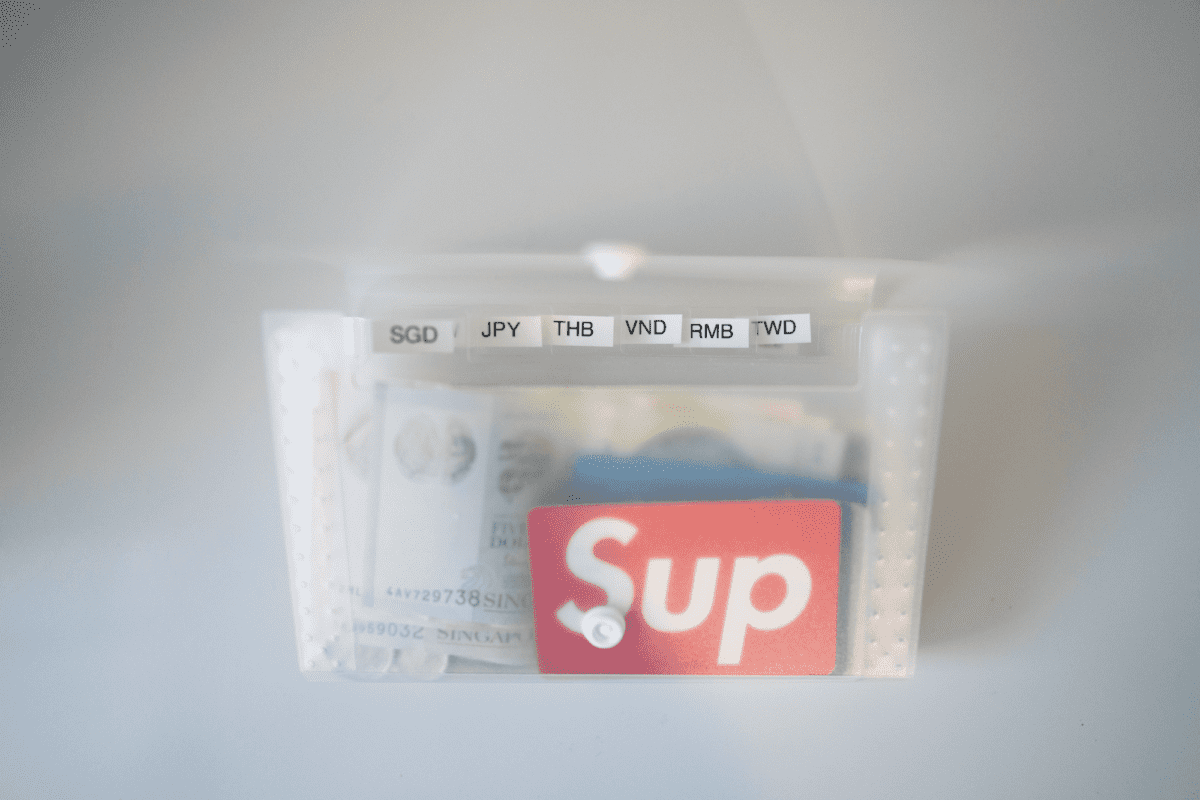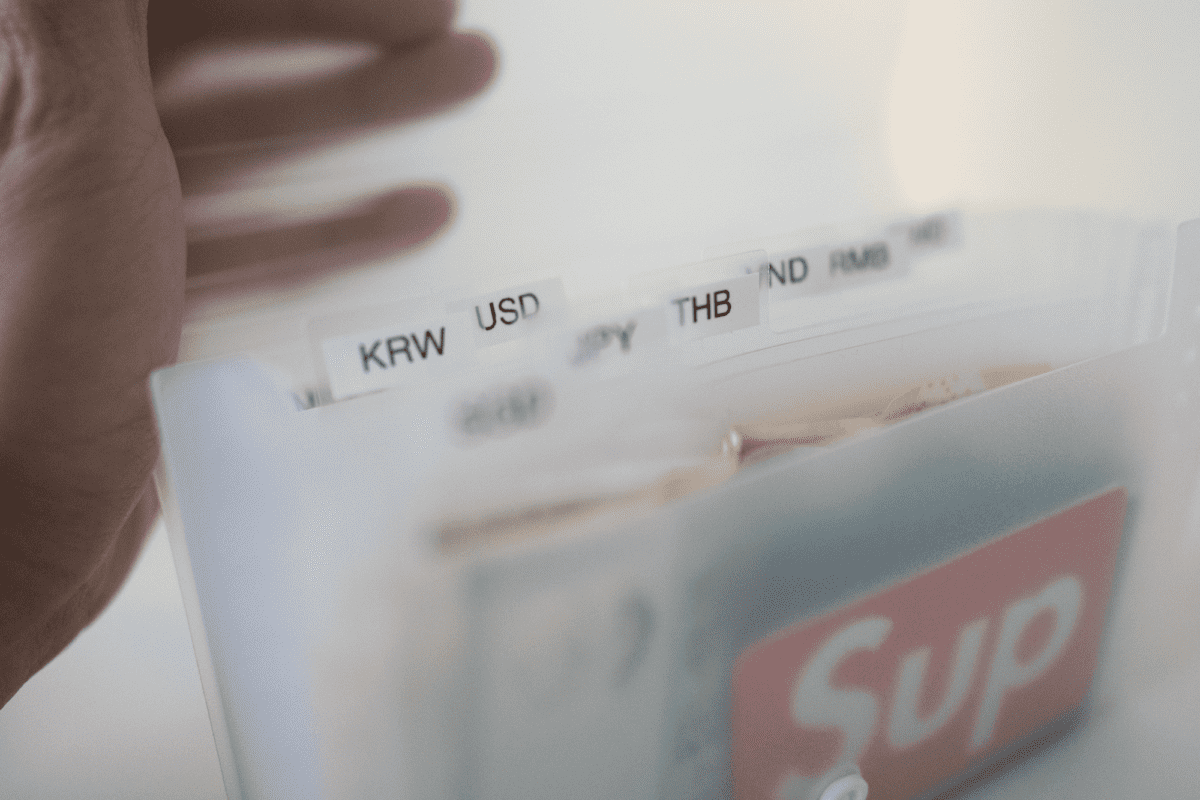This website is made possible by readers. I may earn a small commission when you buy through the links in this article at no extra cost to you. Learn more.
At the end of the trip, do you frantically try to buy souvenirs you don't need in order to get rid of that extra leftover foreign currency? I'm usually very conscious when it comes to how much foreign currency is left over after my trip, but yet I can't seem to avoid it altogether.
My previous system is to just put it into spare wallets, envelopes, ziplock bags, and I have a drawer filled with an array of these so I decided to organize it. I'm going to go through various ways and then the way that I use and recommend.
Why organize foreign currency?
What's wrong with a drawerful of random currencies, you ask? Well, for me, I find that because of the disorganization, I regularly forget that I have a certain amount of a currency and go ahead to exchange more.
How to organize foreign currency
So, I started out with a few requirements I wanted to meet with the way I organized it.
- I want all the different currencies to be in one place, so I go to look for it in the same place before I travel
- I want each currency to be separated from each other
- Apart from notes, I want to include coins and cards that are only usable in the particular country
Step 1: Have as less of it as possible
Before you even get to organizing, you should be proactive in reducing the amount of foreign currency you have in the first place. Here are some of the methods I use to reduce the leftover currency I would be left with.
- Opt for mobile payment whenever possible, for example using WeChat Pay in China. In the same vein, reduce the amount of cards you need by using your phone as a transit card.
- Use cashless payment whenever possible, like your credit card
- If you use an ATM, draw out only what you need
- Convert what remaining foreign currency you have back to your local currency
- If it's a negligible amount, give it away to family and friends
- Use your cash to top up your transit cards. For example, in Taiwan, you can top up with even 1 yuan, which makes it great to get rid of all your coins before coming back.
When you've been disciplined enough and have religiously pared down your remaining foreign currency, that next step is to actually organize the ones you are left with.
Step 2: Get an organizer
To organize foreign currency, you are naturally going to need an organizer. I use a section file from the 100 yen chain in Japan, Daiso. But something like this will work perfectly.
If you already have a binder type notebook, you can also buy zipper pouch inserts for it like these for the Midori Traveler's Notebook.

Step 3: Label the Tabs according to the currency you have
I label them based on the currency code for consistency. I use this labeler but you can just use tape and paper if you don't have one. The one I access most will be towards the front for easier access.

Step 4: Put the foreign currency in
This part is easy enough. But I would encourage you to get rid of receipts or cards that you'll likely never use again. I also have a tab labeled “ALL” to put my cards that I would use for all trips like my Priority Pass card and debit card.
This used to be an ad.
But no one likes ads, so I got rid of them. If my articles helped you, I ask for your support so I can continue to provide unbiased reviews and recommendations. Every cent donated through Patreon will go into improving the quality of this site.

That's it, you should have now one nice little package you can go to before each trip. The only bad thing about this method is that you have be careful lifting it up the right way, or the coins might drop out and get shuffled.
Here is a video version of the entire process
Tagged declutter minimalism organization